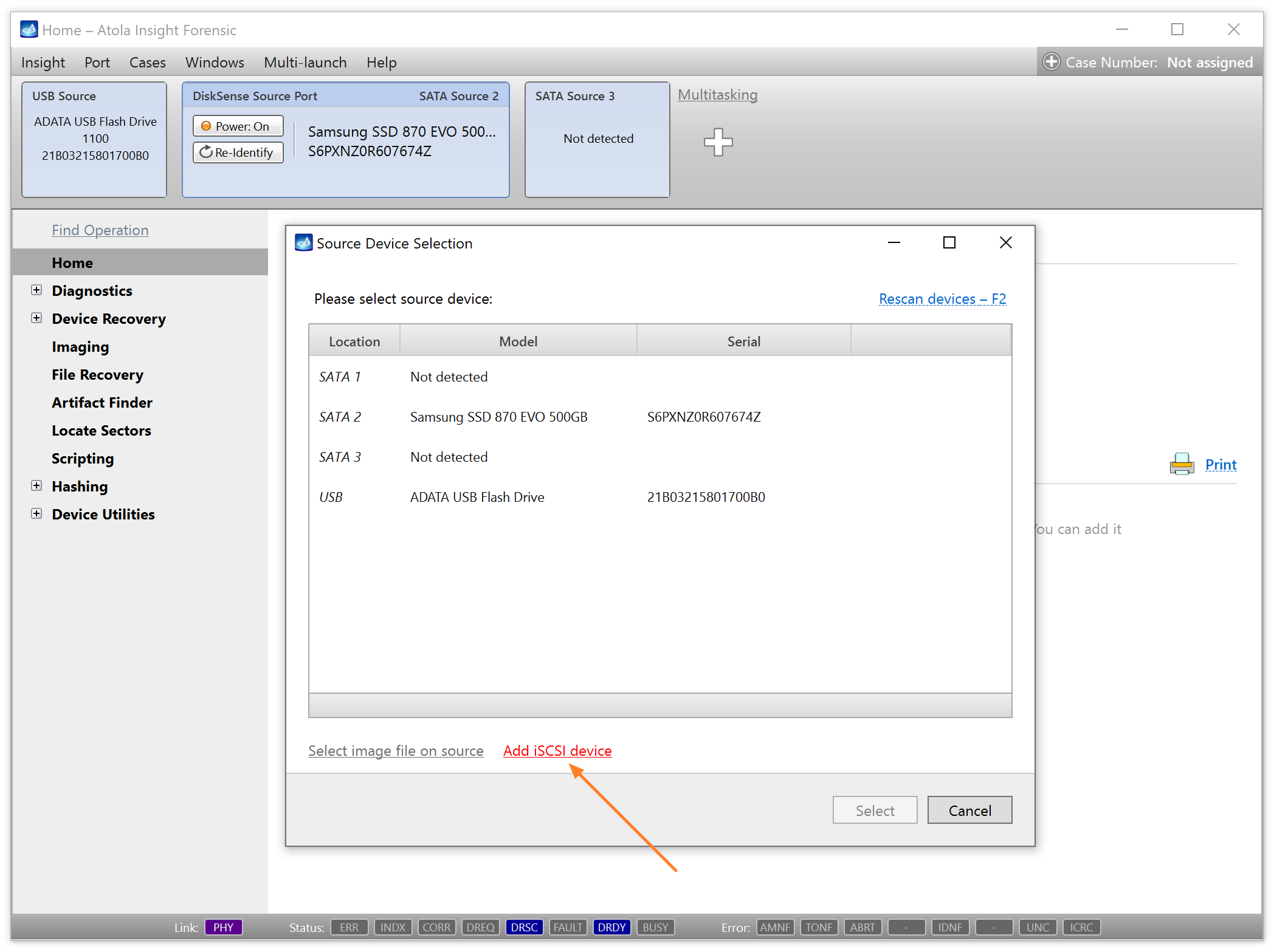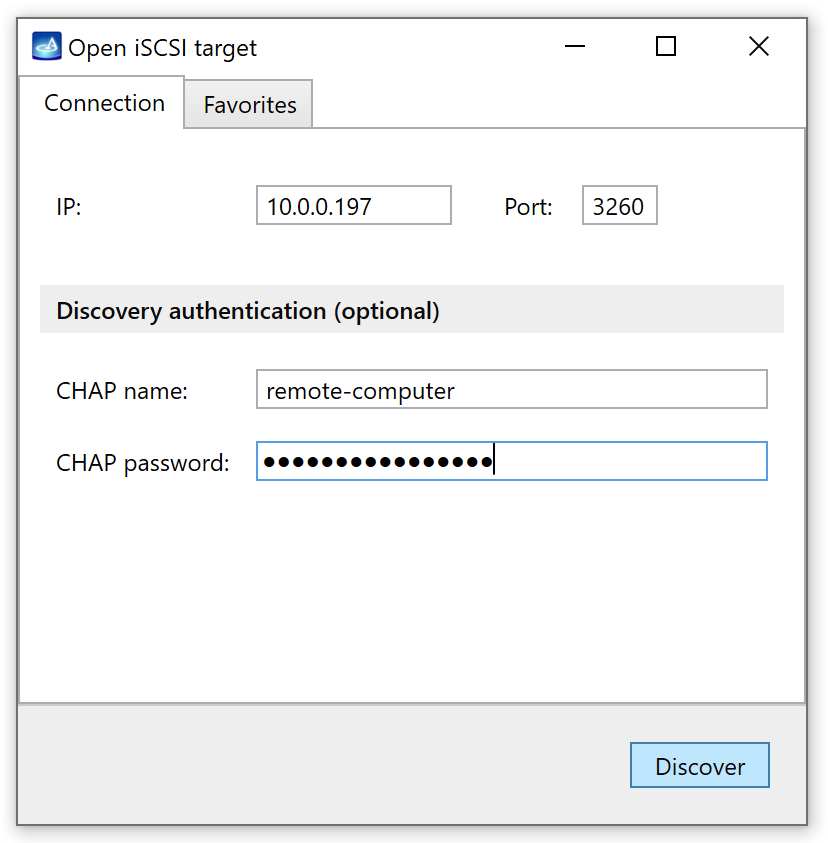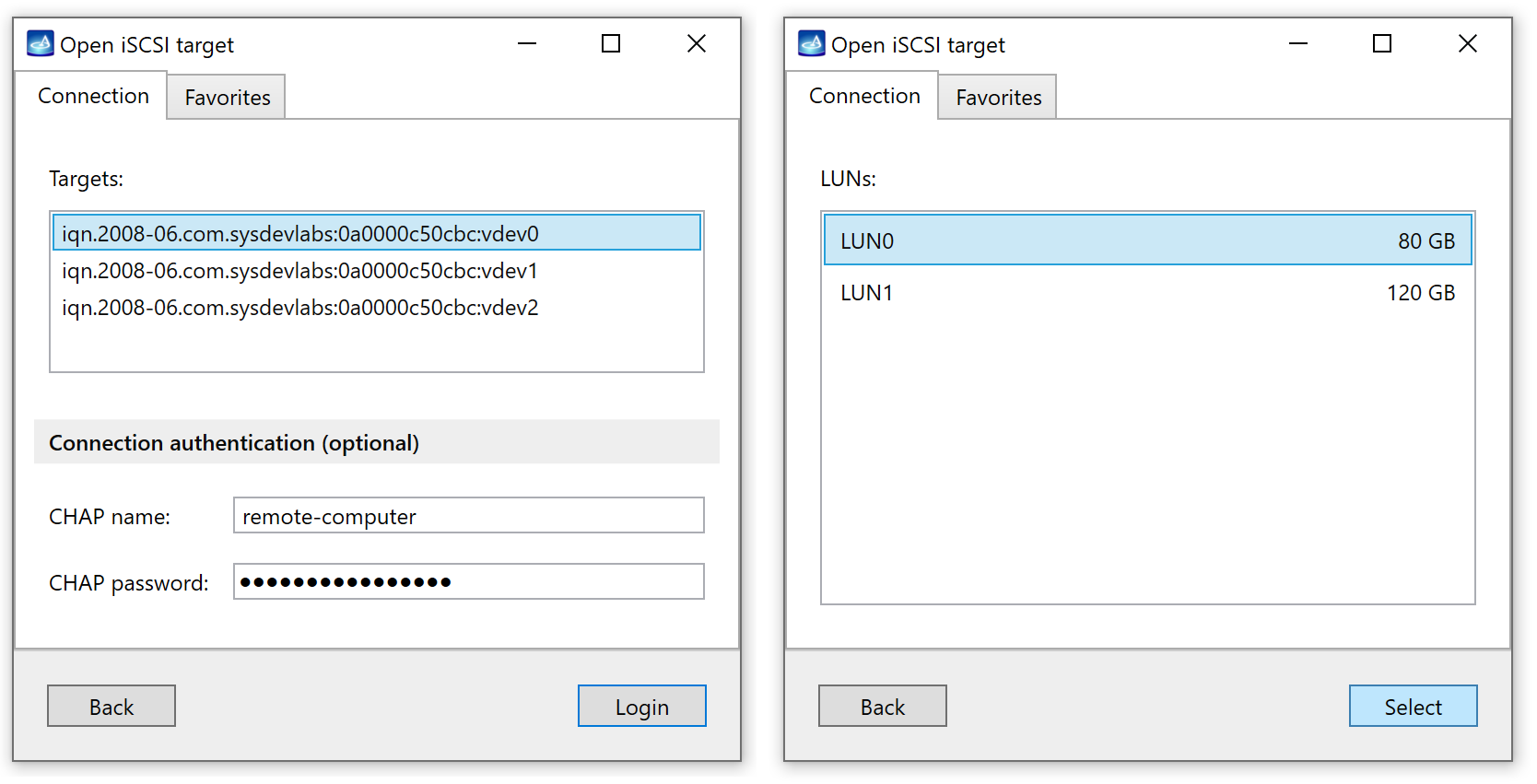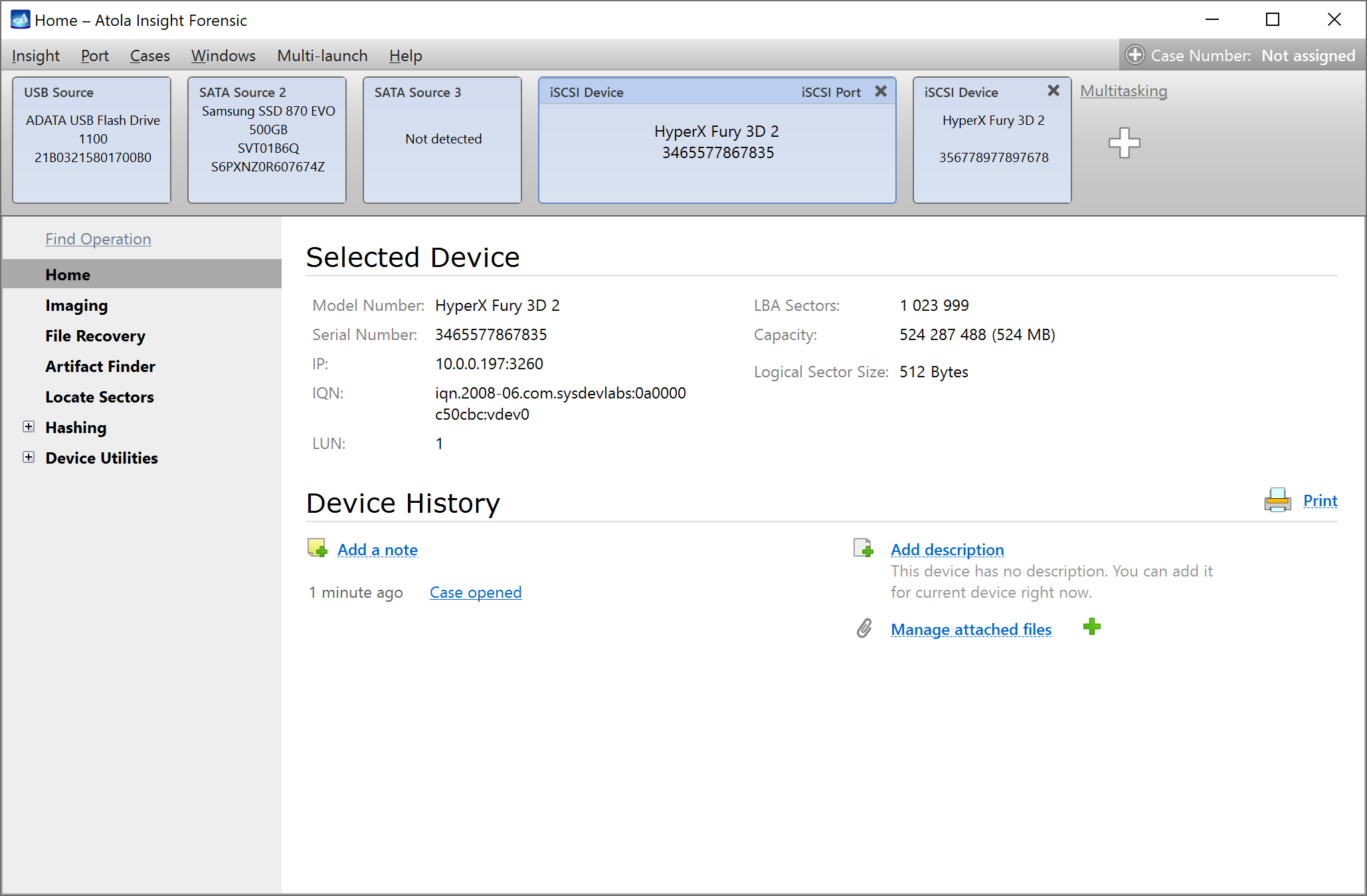Image a remote drive using the iSCSI protocol
The iSCSI network protocol lets you access devices remotely. With its help, you can also image drives that can't be plugged into the DiskSense 2 hardware unit. These could be drives soldered into a motherboard, servers that can't be turned off, or devices you have legal access to but not the right to seize.
Up to 3 remote network drives can be imaged in parallel via iSCSI.
To set up an iSCSI target correctly and expose a physical or logical drive via iSCSI on a network, you can utilize a Python script provided by Atola that automatically creates iSCSI targets for all drives except for a boot device.
Automatically create iSCSI targets
To expose a physical or logical drive via iSCSI on a network, first, you need to set up an iSCSI target correctly. To help you with that, Atola engineers created a Python script named iscsi-targets, that automatically creates iSCSI targets for all drives except for a boot device.
Download iscsi-targets from GitHub →
Features of the ‘iscsi-targets’ script
- Automatically creates iSCSI targets for all drives except for a boot device.
- Ensures that the iSCSI Qualified Name (IQN) of every iSCSI target includes the drive model and serial number. When you add such an iSCSI target in Atola imagers as a source drive, the imager’s software pulls the drive model and serial number from IQN into a case.
- Lets you specify a block device as a script argument to create an iSCSI target only for it.
What you need to run the ‘iscsi-targets’ script
The script runs on Linux only. It was tested on various flavors of Linux like Ubuntu, Fedora, CentOS, and RHEL, including DFIR boot images: Paladin, Caine, and Tsurugi.
- Python 3.6+ must be installed.
-
The script will also check for and install two dependencies the first time it is run:
- targetcli
- python3-rtslib
How to use the ‘iscsi-targets’ script
Here are some examples of using the ‘iscsi-targets’ script.
-
Create iSCSI targets for all drives except for a boot device:
`sudo python3 iscsi-targets.py` -
Create a single iSCSI target for the specified /dev/sdb1 partition:
`sudo python3 iscsi-targets.py /dev/sdb1`
The example below shows the first run of iscsi-targets.py on Paladin. It has added 3 iSCSI targets for SATA and USB drives.
Image up to 3 remote drives in parallel using iSCSI
Here’s how to image a remote drive in Insight Forensic using the iSCSI protocol:
- Expose a physical or logical drive via iSCSI on a network.
-
Go to Port > Select Source and then click the Add iSCSI device link.
Alternatively, click the Plus icon at the top and in the Add Source menu select iSCSI Device. - Enter the IP address and Port of a remote storage device. If needed, also enter a user name and password for remote authentication.
- Click Discover.
- Insight Forensic searches and shows all the iSCSI devices available at the IP and port address you provided. Select your device.
- Create a new case for an iSCSI device or select an existing one.
- Insight Forensic opens the selected iSCSI device as a separate port.
Now, you can image this device as usual or launch other operations, such as:
- File recovery
- Artifact finder
- Locate sectors
- Caclulate hash
- Disk editor (in read-only mode)






